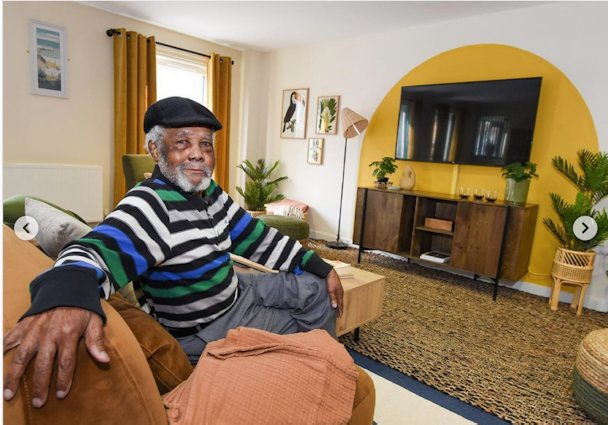How Made.com is responding to ‘influencer fatigue’
Made.com has evolved its influencer strategy to focus on purpose projects, citing “influencer fatigue” and increased positive brand sentiment for its shift.

Allison Sadler’s care home renovation, part of Made.com’s social purpose push
Made’s head of consumer comms and social Lauren Spearman tells The Drum social listening revealed customers are becoming jaded with traditional gifting and paid-for influencer marketing, and are looking for more meaningful content.
“This is the evolution of what influencer marketing should look like – it should be based on consumer behavior, be more impactful and more memorable,” she says. “But also create positive change and really contribute to society.”
Made pivoted its social media marketing to community projects during the first lockdown when it reallocated its influencer budget to donate furniture to NHS hospitals, revamping dreary staff rooms.
“When we looked at what our customers were saying when the pandemic hit, they were telling us that community was more important than ever,” she says.
Positive consumer reaction to the initiative sparked Spearman’s team to set up the DIY SOS-style YouTube series Madeover. The format has featured influencers including Allison Sadler, who renovated a care home, and creators Poodle & Blonde, who redesigned Brixton’s Ebony Horse Club.
Initially around half the budget was going into donating products, with a fraction going on experimenting with integrated marketing campaigns. Now Spearman says this is Made’s core social media strategy.
“Paid-for posts and gifting is a very traditional way of working, and each year we move away from this strategy,” she says. “We are purposely moving into paid long-term projects that benefit audiences.”
Since shifting strategies Spearman has seen increased brand engagement and positive sentiment, and has registered a 30% year-on-year increase in social content about Made.com (Wearisma).
“People are so used to a certain type of influencer content that posts don’t necessarily break through, but we’ve now seen much more positive reactions,” Spearman says. “The work that we are doing has proved you can move into these projects and still attract consumers.”
Looking ahead, Spearman teases that this repositioning would become even more integral to its 2022/2023 social strategy. “There is much more to come – we’ve only just scratched the surface of what we can do,” she says. “This is a really positive space to be moving into and it’s made the whole team really invigorated.”
Her dream would be a Netflix series “that is Made’s version of DIY SOS,” Spearman suggests.
Outside of community projects, Made will continue to work with creators via product collaborations such as the recent tie-up with 2LGStudios, which features on Channel 4’s Changing Rooms.
“Creators are a huge value to our business, but most consumers don’t understand [as] they think influencer marketing is free products,” Spearman concludes.

